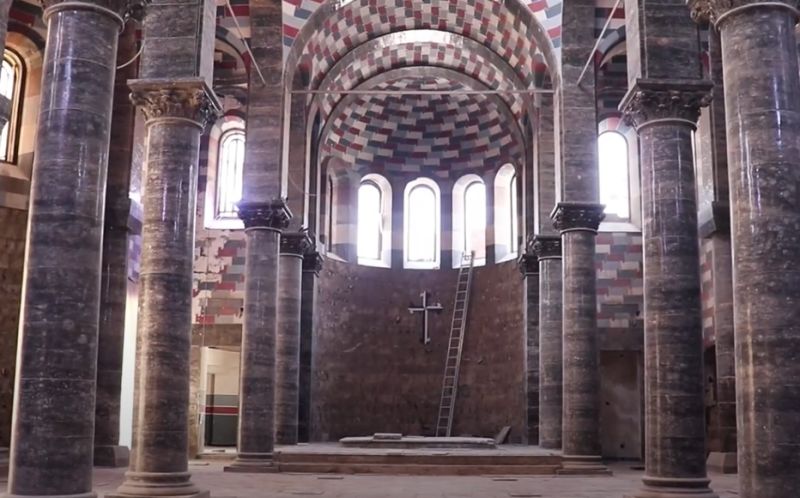
ACI Prensa Staff, Jan 11, 2024 / 10:00 am (CNA).
The Dominican Church of Our Lady of the Hour, one of the most emblematic in Mosul, northern Iraq, has been completely restored after the destruction carried out by Islamic State terrorists 10 years ago.
Father Olivier Poquillon, director of the French Biblical and Archaeological School of Jerusalem, posted on X Dec. 31 some photographs of the church, which was rebuilt with the collaboration of the United Nations Educational, Scientific, and Cultural Organization (UNESCO).
Mossoul : Fin d’année et fin des préparatifs de la messe pour la paix célébrée le 1er janvier par le Maître de l’Ordre des Prêcheurs ( Dominicains ). Que Notre-Dame de l’Heure veille sur le passage à la nouvelle année.
Ensemble, continuons à rebâtir la confiance. #paix #Prayer pic.twitter.com/cppC5KvS61— fr. Olivier Poquillon OP (@OPoquillon) December 31, 2023
That same day, on the occasion of the solemnity of Mary, Mother of God, the Dominicans of Iraq celebrated a Mass for peace in the church for the first time since its destruction. The Eucharist was celebrated by Father Gerard Francisco Timoner, superior general of the Dominican order, in the presence of several friars and believers in an atmosphere of joy and hope.
The Latin Church of Our Lady of the Hour, whose official name in Arabic is al-Saa’a, was established in 1873 as the center of the Dominican presence in Iraq.
It was also an important cultural and academic center, including the first girls’ school, and it had the first printing press in Iraq.
Marking a historic moment in ongoing restoration by UNESCO, Mass for peace was joyfully held on the main altar of Our Lady of the Hour for the first time. The occasion was graced by the presence of Fr. Gerard Timoner III, the Master of the Dominican Order, who traveled from Rome. pic.twitter.com/L51yGaLLVD
— UNESCO Iraq Office (@UNESCOIraq) January 1, 2024
Located in the old city of Mosul, a historic district that was characterized by strong relationships between various cultures and religions, such as Christians, Yazidis, Sunni and Shia Muslims as well as Arabs, Chaldeans, and Kurds, this church offered a space for dialogue fostered by the Dominican friars.
However, this delicate balance was shattered with the invasion and occupation of the city by Islamic State terrorists in the summer of 2014. The church, like much of Mosul’s historic center, was heavily damaged by the jihadists and by clashes during the Iraqi army’s offensive to retake the city.
In addition, ISIS used the church as a weapons warehouse and for torture. Its archaeological artifacts were stolen, including its famous clock, which was a gift from the wife of Emperor Napoleon III to the city’s Dominican fathers.

The destruction of the church was not only an architectural tragedy but also negatively affected all residents of Mosul, Muslims and Christians alike, as they lost an important symbol of the city’s history and identity.
In April 2020, UNESCO undertook restoration work on both the church and the old city of Mosul. The Dominicans were actively involved in this task so that the reconstruction was not limited only to material aspects but also contributed to reestablishing the ties between the various cultural and religious communities.
This story was first published by ACI Prensa, CNA’s Spanish-language news partner. It has been translated and adapted by CNA.
If you value the news and views Catholic World Report provides, please consider donating to support our efforts. Your contribution will help us continue to make CWR available to all readers worldwide for free, without a subscription. Thank you for your generosity!
Click here for more information on donating to CWR. Click here to sign up for our newsletter.




Leave a Reply